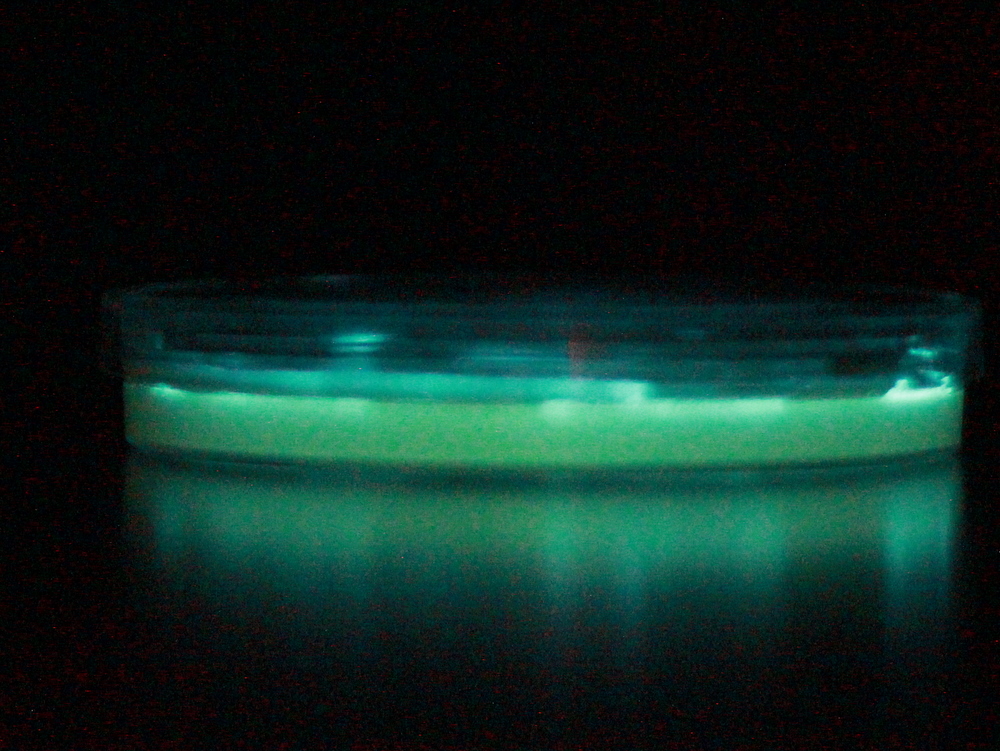Team:Cambridge/Bioluminescence/Bacterial Luciferases
From 2010.igem.org
(Difference between revisions)
(→Our work) |
|||
| Line 1: | Line 1: | ||
{{:Team:Cambridge/Templates/headerMinimalprototype}} | {{:Team:Cambridge/Templates/headerMinimalprototype}} | ||
{{:Team:Cambridge/Templates/headerbar|colour=#fb5c2b|title=Project Vibrio: Introduction}} | {{:Team:Cambridge/Templates/headerbar|colour=#fb5c2b|title=Project Vibrio: Introduction}} | ||
| - | {{:Team:Cambridge/Templates/RightImage|image=Cambridge-Photobacterium_plate.JPG|caption= | + | {{:Team:Cambridge/Templates/RightImage|image=Cambridge-Photobacterium_plate.JPG|caption=An agar plate with bioluminescent bacteria.}} |
'''Project Vibrio''' was designed to complement Project Firefly, by using bacterial lux operons to do what had been impossible with firefly luciferases: | '''Project Vibrio''' was designed to complement Project Firefly, by using bacterial lux operons to do what had been impossible with firefly luciferases: | ||
* Emission of blue light to complete our spectrum of emission wavelengths. | * Emission of blue light to complete our spectrum of emission wavelengths. | ||
Revision as of 18:41, 23 October 2010

Project Vibrio: Introduction
Project Vibrio was designed to complement Project Firefly, by using bacterial lux operons to do what had been impossible with firefly luciferases:
- Emission of blue light to complete our spectrum of emission wavelengths.
- Substrate production within E. coli, avoiding the need for addition of external substrates, such as luciferin.
Lux operons are found in the genomes of a range of natural bioluminescent bacteria and encode five enzymes involved in the light-generating pathway.
- luxA and luxB form the luciferase of the system, which causes the emission of light when acting on the substrate tetradecanal.
- luxC, luxD and luxE are involved in the biosynthesis of tetradecanal from readily available substrates.
In nature, the lux genes appear to be repressed by the nucleoid protein, H-NS, and occur under quorum sensing control.
Our work
James Slock from Kings College?? kindly provided us with a plasmid containing the lux operon from the bacterium Vibrio fischeri.
 "
"
